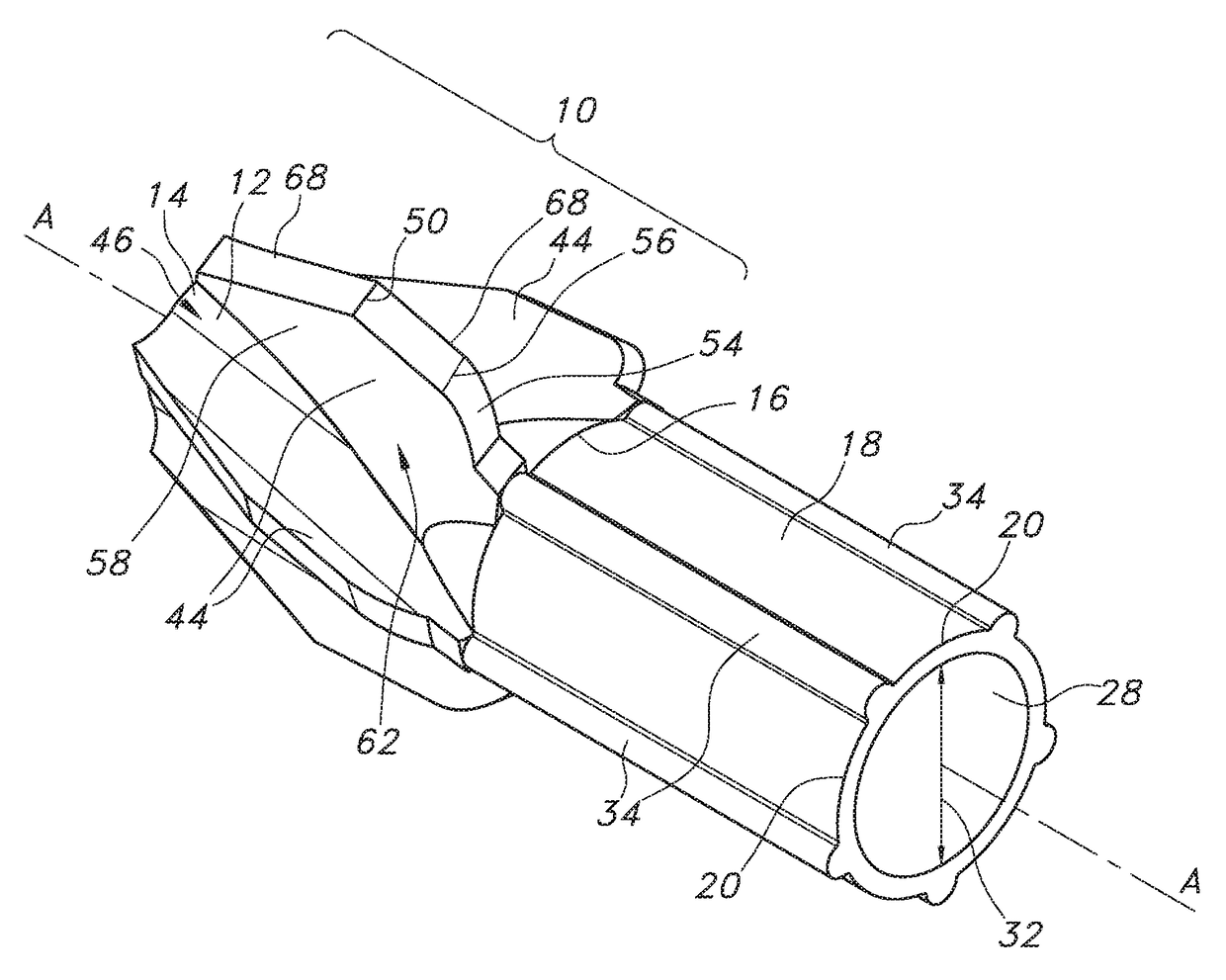Cutting heads for intramedullary reamers
- Summary
- Abstract
- Description
- Claims
- Application Information
AI Technical Summary
Benefits of technology
Problems solved by technology
Method used
Image
Examples
Embodiment Construction
[0030]Now turning to the figures, FIGS. 1-3, 4, 5, and 6 illustrate an embodiment of a bone cutter comprising a cutting head 10 of the present invention. As shown, the cutting head 10 comprises a frusto-conical body 12 that extends lengthwise along a longitudinal axis A-A from a cutting head distal end 14 to a cutting head proximal end 16. In an embodiment, a barrel portion 18 extends in a proximal direction along longitudinal axis A-A from a barrel portion distal end at the cutting head proximal end 16 to a barrel proximal end 20. In an embodiment, the cutting head 10 comprises a distal end wall 22 having an end wall surface 24. In an embodiment, the end wall surface 24 is oriented perpendicular to longitudinal axis A-A. The cutting head 10 provides for the cutting and removal of bone and tissue from a bone during a surgical procedure, for example, during reaming of an intramedullary canal in a femur. The barrel portion 18 provides for the attachment of the cutting head 10 to a dri...
PUM
| Property | Measurement | Unit |
|---|---|---|
| Angle | aaaaa | aaaaa |
| Angle | aaaaa | aaaaa |
| Angle | aaaaa | aaaaa |
Abstract
Description
Claims
Application Information
 Login to View More
Login to View More - R&D
- Intellectual Property
- Life Sciences
- Materials
- Tech Scout
- Unparalleled Data Quality
- Higher Quality Content
- 60% Fewer Hallucinations
Browse by: Latest US Patents, China's latest patents, Technical Efficacy Thesaurus, Application Domain, Technology Topic, Popular Technical Reports.
© 2025 PatSnap. All rights reserved.Legal|Privacy policy|Modern Slavery Act Transparency Statement|Sitemap|About US| Contact US: help@patsnap.com



